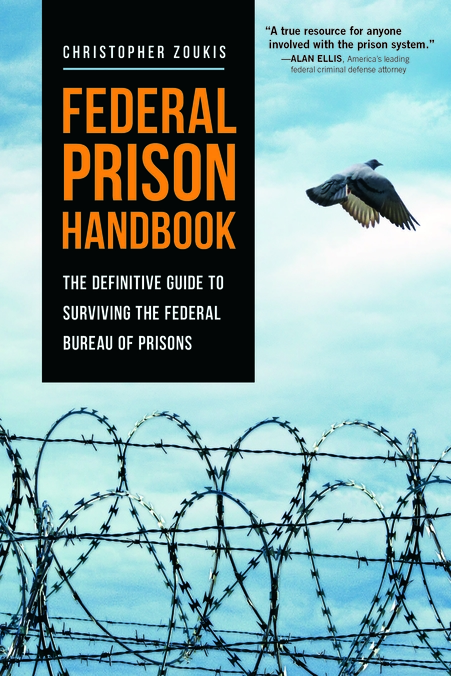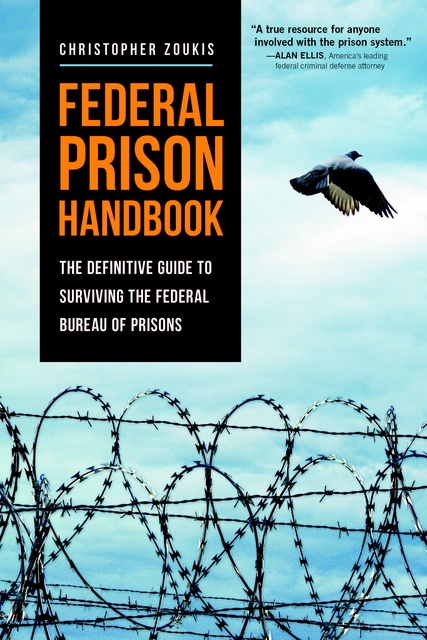The Flawed Science of Cannabis Impairment Detection: The Need for Evidence-Based Reform
As state after state abandons the failed experiment of marijuana prohibition, a critical public safety challenge remains largely unaddressed: how do we accurately and fairly identify individuals whose cannabis use has rendered them dangerously impaired behind the wheel or in safety-sensitive workplaces? Dr. William J. McNichol’s paper in the Journal of Studies on Alcohol and Drugs exposes a troubling reality: the primary tools currently used to detect cannabis impairment—blood THC thresholds and the testimony of so-called “Drug Recognition Experts” (“DREs”) and “Workplace Impairment Recognition Experts” (“WIREs”)—are fundamentally unscientific, unreliable, and prone to profound injustice. This failure is not merely an academic concern. It represents a systemic crisis undermining public safety, eroding trust in legal institutions, and inflicting significant harm on individuals wrongly accused. The transition from prohibition to regulated legalization requires a massive reinvestment in scientifically rigorous research to develop truly objective and practical impairment detection methods.
The widespread move away from marijuana prohibition acknowledges its ineffectiveness and social costs. However, legalization does not eliminate the genuine public safety risks associated with impairment. Individuals operating vehicles or heavy machinery while impaired by cannabis pose a significant threat, regardless of the substance’s legal status. Jurisdictions now seek to manage this risk through laws penalizing impairment, defined universally as a condition of reduced physical or mental function affecting the ability to operate a vehicle or perform safety-sensitive tasks safely. The critical flaw in this otherwise rational approach lies in the tools used to identify impairment at the moment it matters. As McNichol discusses, these tools lack scientific validity, rendering enforcement arbitrary and unjust.
The Fatal Flaw of Borrowing
the Alcohol Model:
Blood THC Thresholds
A core aspect of McNichol’s discussion addresses the pervasive but misguided attempt to transplant the alcohol impairment detection model onto cannabis. This model relies on a well-established, scientifically validated correlation between Blood Alcohol Concentration (“BAC”) and impairment, particularly for fatal accidents. Policymakers and law enforcement, seeking similar simplicity, have pushed for per se laws establishing legal limits for delta-9-tetrahydrocannabinol (“Δ-9 THC”) in blood (e.g., 2ng/ml in Ohio, 5ng/ml in Illinois and Washington). McNichol argues that this approach ignores fundamental pharmacological realities:
1.Profound Chemical Differences: Alcohol is a small, water-soluble molecule that easily crosses into the brain, creating a relatively direct and predictable relationship between blood concentration and brain effect (impairment). Cannabinoids, however, are large, fat-soluble molecules. Their journey to the brain is slower and more complex, creating a significant disconnect between their presence in blood and their peak psychoactive effect. An individual may have high blood THC levels while no longer impaired, or conversely, may be significantly impaired while levels are dropping or relatively low.
2.The Complexity of Cannabinoids and Individual Variation: Focusing solely on Δ-9 THC ignores the reality that numerous other cannabinoids possess psychoactive properties and contribute to impairment. Furthermore, inactive metabolites can linger in blood and urine long after impairment subsides. Importantly, heavy cannabis users develop tolerance, meaning a blood THC level causing significant impairment in a naïve user may have minimal effect on a chronic user. As McNichol emphasizes, summarizing a substantial body of research, “the presence per se of cannabinoids in bodily fluids provides little, if any, information concerning behavioral impairment.”
3.Practical and Legal Hurdles: Even if a valid correlation existed, reliably quantifying specific cannabinoids in the field is analytically complex and often impractical, leading some police departments to abandon the effort. Legally, warrantless blood draws raise significant Fourth Amendment concerns, complicating evidence collection. Despite these insurmountable scientific and practical obstacles, per se THC laws remain on the books, creating a legal framework built on pseudoscience.
The Pseudoscience of “Expert” Recognition: DREs and WIREs
Because blood tests are scientifically incapable of determining cannabis impairment, law enforcement and workplaces have increasingly turned to human “experts,” viz., Drug Recognition Experts and their recent spinoff, Workplace Impairment Recognition Experts. McNichol provides a sobering critique of these programs, revealing them not as science-based protocols but as elaborate exercises in confirmation bias masquerading as expertise. WIREs, designed to extend the DRE Protocol’s flawed methodology into enforcing workplace safety regulations, rely on the same unscientific indicators and subjective assessments. Compounding this, WIRE training is often supported by unqualified professionals, such as chiropractors, whose scope of practice excludes impairment detection or treatment. For example, a chiropractor-led company offers a 4–6-hour online course for $1,200, claiming to train individuals to recognize workplace impairment, despite chiropractors’ lack of expertise in psychoactive substances (Workplace Impairment Solutions). This mirrors the involvement of optometrists in DRE training, further illustrating the infiltration of pseudoscience into impairment detection.
1.Origins and Nature of the DRE Protocol: Originating in the Los Angeles Police Department and now overseen by the International Association of Chiefs of Police, which authorizes state police departments to commission officers as Drug Recognition Experts, the DRE Protocol enjoys widespread popularity among police and prosecutors despite its lack of scientific foundation. Presented as a standardized, 12-step evaluation to identify drug impairment and categorize the drug involved, McNichol characterizes it as “police science”—techniques developed by officers for police work, encrusted with the trappings but little of the substance of science. He asserts that the techniques developed under the DRE Protocol lack genuine scientific foundation. It is essentially a lay opinion masquerading as a science-based conclusion.
2.Specific Critiques of DRE Methodology for Cannabis: McNichol dissects a range of DRE indicators supposedly diagnostic of cannabis impairment, exposing their absurdity and lack of scientific grounding. For instance, DREs assess muscle tone by squeezing limbs and subjectively categorizing it as “normal,” “rigid,” or “flaccid,” a method medical professionals reject, as they use objective, numerical scales based on resistance to movement. Similarly, DREs cite elevated blood pressure and pulse as indicators, ignoring that nearly half the sober U.S. adult population has hypertension and that the stress of a traffic stop or accident—exacerbated by the intimidating DRE technique of repeatedly measuring the carotid pulse by placing fingers on the neck—can fully account for these signs. Even more absurdly, DREs claim the ability to diagnose paranoia, a complex psychiatric condition, on the spot, a skill not even board-certified psychiatrists claim. The DRE Protocol also lists “increased appetite” (e.g., an open bag of potato chips) as evidence of impairment and paradoxically includes normal physiological traits—such as normal pupil size, body temperature, and eye tracking (horizontal and vertical gaze nystagmus)—as indicators of cannabis impairment, further undermining its scientific credibility. For motorists, it is a no-win endeavor—heads I win, tails you lose.
3.Empirical Evidence of Unreliability: McNichol does not rely solely on theoretical critique; he points to damning empirical evidence:
A 1998 controlled lab study found the DRE Protocol produced false negatives or false positives 45.5% of the time—barely better than chance.
A 2002 study by DRE proponents revealed alarming inconsistency. When one group of DREs concluded a subject was impaired only by cannabis, a second group agreed only 69% of the time. When the first group found no impairment, the second group still claimed impairment 34.3% of the time. The protocol’s allowance for a second “guess” artificially inflated agreement rates, masking fundamental unreliability.
4.Judicial Skepticism: Courts are increasingly recognizing this lack of reliability. McNichol notes that Maryland, Michigan, and Rhode Island exclude DRE testimony. New Jersey severely limits it, allowing only testimony that behavior is “consistent with” marijuana use, not actual impairment, and requiring toxicological confirmation. Minnesota prohibits DREs from being called “experts,” reducing their testimony to that of a lay observer.
5.WIREs: Exporting Pseudoscience to the Workplace: WIREs directly inherit the flawed methodology of DREs, merely transposing it to workplace safety enforcement. Their “expertise” is suspect for identical reasons—reliance on the scientifically invalid DRE Protocol.
The Ecosystem of Support: Questionable Alliances and Resource Imbalance
McNichol discusses the troubling ecosystem that sustains these unreliable methods, highlighting how financial incentives and resource disparities perpetuate injustice.
1.Optometrists and Chiropractors: Allies Without Expertise: Surprisingly, optometrists (through the American Optometric Association) and chiropractors have become vocal supporters and trainers for DRE/WIRE programs. McNichol explains that neither recognition nor treatment of drug impairment falls within their defined scope of practice or training. Optometrists primarily prescribe glasses and manage eye health; chiropractors focus on spinal alignment. Laws governing their professions typically bar them from prescribing the very drugs DREs claim to detect. McNichol suggests their involvement is primarily a lucrative “business opportunity,” a view implicitly supported by courts like the Illinois Supreme Court regarding optometrists. Online WIRE certification courses offered by chiropractors, costing $1200 and taking only 4-6 hours, exemplify the lack of rigor.
2.The Resource Chasm in the Courtroom: The most potent factor enabling the acceptance of DRE/WIRE testimony is the severe imbalance in resources between the prosecution and the typical defendant. Citing Peter Neufeld and the National Research Council, McNichol observes that most defendants are indigent, represented by overburdened public defenders lacking the funds or expertise to mount effective scientific challenges. They cannot hire pharmacologists, toxicologists, or statisticians to debunk DRE methodology or expose the lack of qualifications of supporting “experts” like optometrists. The case of State v. Olenowski, 305 A.3d 901 (N.J. 2023), is a prime example of this: the public defender failed to challenge the credibility of any of the 16 prosecution witnesses (including an optometrist) testifying to DRE reliability. This stands in stark contrast to well-funded civil litigation where scientific evidence is rigorously contested. The result is a criminal justice system where pseudoscience prevails by default.
Why This Failure Matters:
Justice, Safety, and Social Trust
The consequences of relying on scientifically invalid impairment detection extend far beyond technical debates. McNichol articulates the profound societal harms:
1.Devastating Individual Consequences: A DUI conviction carries severe penalties: license suspension (hindering work, healthcare, and childcare), crippling fines and insurance hikes, and a lifelong stigma. Wrongful convictions based on unreliable blood THC levels or subjective, error-prone DRE opinions cause enormous harm to innocent individuals and their families. The zeal for safety cannot justify sacrificing fundamental fairness.
2.Erosion of Legal Legitimacy and Social Cohesion: Enforcing laws based on demonstrably untrustworthy evidence fundamentally undermines the justice system’s credibility. It fosters cynicism, suggesting that “impairment” enforcement serves not public safety, but hidden agendas like harassment or oppression of certain groups. Given the documented potential for bias (implicit and explicit) in subjective evaluations like those of DREs/WIREs, the risk of disproportionate impact on marginalized communities is significant. This perception, whether accurate or not, fuels social resentment and erodes respect for the law itself. As McNichol warns, “The unjust enforcement of any law undermines the respect and support for all laws.”
3.Undermining Genuine Road and Workplace Safety: Paradoxically, unreliable detection methods hinder real safety efforts. False positives waste resources on prosecuting the unimpaired, while false negatives allow genuinely impaired individuals to escape consequences. Public awareness campaigns lose credibility when the public perceives the detection methods as unfair or unscientific. Effective deterrence requires credible enforcement.
The Imperative Path Forward: Science, Funding, and Leadership
McNichol concludes his paper with a clear, actionable roadmap for reform, grounded in scientific integrity and justice:
1.Invest in Rigorous Scientific Research: We must finally undertake the comprehensive research called for decades ago (e.g., by the American Medical Association in 1985). This requires dedicated, substantial funding to:
Develop and Validate New Psychomotor Tests: Create standardized, baseline-sensitive tests specifically designed and rigorously validated for detecting cannabis impairment.
Identify Biochemical Markers: Intensively research potential biomarkers beyond just THC—including other psychoactive cannabinoids, metabolites (like THC-COOH), and potentially novel indicators—that correlate reliably and practically with actual functional impairment.
Explore Combined Approaches: Investigate whether combining validated psychomotor tests with specific biochemical markers offers superior accuracy and practicality.
Establish and Publish Error Rates: Crucially, any proposed method must have its error rates, especially its false positive rate, rigorously determined and made transparent for informed policy debate. Protecting the innocent is paramount.
2.Redirect Marijuana Tax Revenue: McNichol identifies a readily available and morally appropriate funding source: the substantial tax revenue generated by legal marijuana sales. Currently, these funds often subsidize the very DRE programs that lack validity or go to general budgets. A significant portion must be earmarked specifically for the high-priority research outlined above. This aligns the revenue source with addressing a primary social cost of legalization.
3.Shift Leadership from Law Enforcement to Science: Leadership in developing impairment policy cannot remain dominated by law enforcement agencies and their associations, who have a vested interest in maintaining the status quo despite its flaws. McNichol insists that the “substance-use science community”—medical doctors, physiologists, toxicologists, pharmacologists, chemists, statisticians—must lead both the foundational research and the subsequent legal and policy discussions. Science, not police procedure, must dictate the standards.
4.Judicial Vigilance: Courts must continue and intensify their critical scrutiny of DRE/WIRE testimony and per se THC laws, demanding rigorous scientific validation before admitting such evidence, particularly opinion testimony on ultimate impairment.
Conclusion
William McNichol’s analysis is a persuasive indictment of the current state of cannabis impairment detection. It reveals a system reliant on methods (blood THC thresholds and DRE/WIRE evaluations) that are not merely imperfect but fundamentally pseudoscientific. These methods produce inconsistent, unreliable results, leading to wrongful convictions, undermining genuine public safety efforts, and eroding public trust in the justice system. The transition to marijuana legalization has made the need for accurate impairment detection more urgent, not less. We can no longer afford to pretend that inadequate tools are sufficient.
The path forward is clear, though challenging: a massive, sustained investment in rigorous scientific research, funded appropriately by marijuana tax revenue, and led by the scientific community, not law enforcement. The goal must be the development and implementation of objective, practical, and scientifically validated methods for identifying true impairment. This is not merely a technical challenge; it is a matter of justice, fairness, and the integrity of our legal system. McNichol argues that we can, and we must, do far better. The safety of our roads and workplaces, and the fundamental fairness of our society, depend on it. The time for pseudoscience is over, and the era of evidence-based impairment detection must begin now.
Source: William J. McNichol, Pseudoscience and the Detection of Marijuana-Based Impairment: We Can and Must Do Better, 86 J. Stud. Alcohol & Drugs 503 (2025).
As a digital subscriber to Criminal Legal News, you can access full text and downloads for this and other premium content.
Already a subscriber? Login





